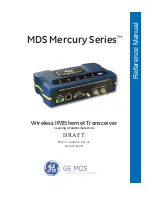
84
Appendices|CONNEX ProSight Antenna Guidelines
Doc P/N: 9040962 | Rev 06 | Printed 17 August 2017
Navigation pane
CONNEX ProSight Antenna Guidelines
We recommend following these guidelines when using a CONNEX ProSight antenna array or designing your own array.
For HD transmitter antenna installation instructions, see
Wiring and Installing the Antenna
.
Full 5GHZ Frequency Band Support
ProSight antennas are designed to cover the full span of the 5 GHz unlicensed band, between 5150 MHz and 5925 MHz without degradation at any
of the sub-bands.
Antenna Configuration
CONNEX ProSight uses MIMO (Multiple Input and Multiple Output) and diversity technology. The ProSight HD transmitter uses two transmitting
antennas, and the ProSight HD receiver uses five receiving antennas.
The RF beam of the ProSight transmitting antennas is both horizontally and vertically omni-directional and that of the receiving antenna is vertically
omni-directional.
The RF link should remain stable as long as at least one of the transmitting antenna beams is pointing towards the receiving antennas.
To achieve optimal configuration for a robust and stable link of a maneuvering drone it is recommended that the two transmitting antennas be placed
at 90°C to each other and that all five receiving antenna be positioned straight up. This configuration best ensures that at least one transmitting
antenna will be in a (almost) vertical position towards the HD receiver antennas during the drone’s maneuvers.
Tip:
Analog systems usually utilize the sub-band of 5600MHZ to 5900MHz, hence their antennas are designed to function
best at these frequencies. This is also the case with most circular antennas.
CONNEX ProSight Installation and Operation Guide







































